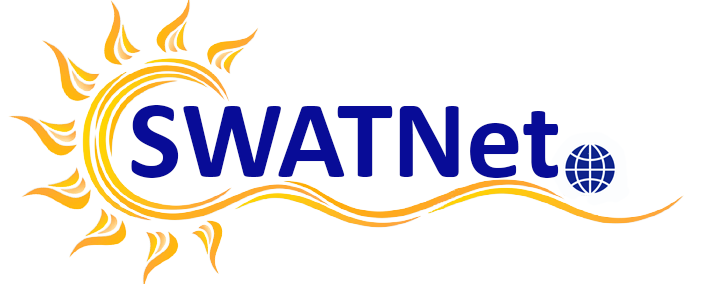
SWATNet participates European Researchers’ Night
The European Researchers’ Night is an European-wide outreach event gathering together scientists and a wider public. This year the event was organized on Friday 29 September. SWATNet participants organized activities at several places.
University of Helsinki
We organized a daytime event at the Kumpula Campus for kindergarten kids and middle school students together with the EU project SERPENTINE and Finnish Center of Excellence in Research of Sustainable Space (FORESAIL). The event was sponsored by the Finnish Physical Society and FORESAIL.
For kindergarten kids we first showed pictures of the Sun and its effects on us. After a flood of questions it was time for hands-on work! We had coloring pictures (prepared by Eleanna Asvestari) featuring the Sun blowing the solar wind and coronal mass ejections, and the protecting magnetosphere of the Earth. Kids decorated them with colored pencils, glitter glue and space-themed stickers. The other activity for kindergarten kids was to make their own Sun from paper balls and pipe cleaners. Pipe cleaners could represent either the Sun’s magnetic field or solar rays.
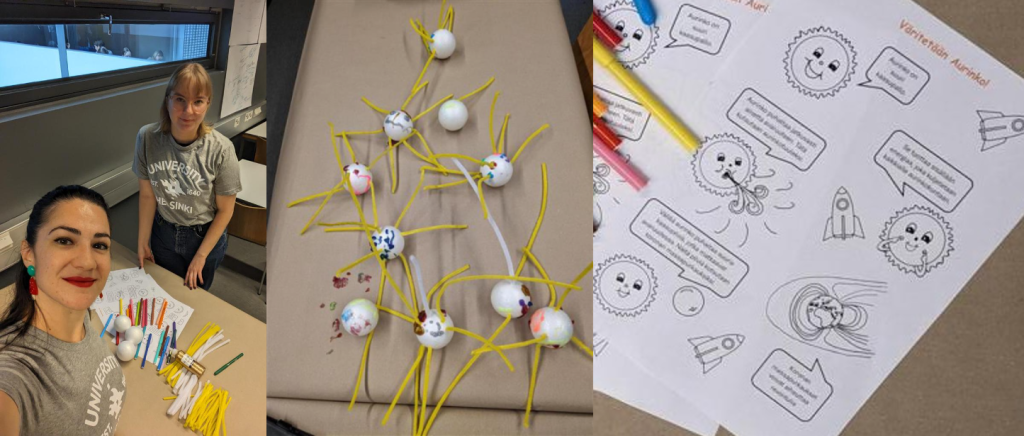
The middle school students started with a Kahoot quiz. Did you know that one solar eruption hurls a mass equalling six million blue whales from the Sun into interplanetary space? Or that the dark “stains” at the surface of the Sun called sunspots are regions of strong magnetic field.
Next, SWATNet Phd student Andreas revealed his secret skill. As a researcher, Andreas works with coronal simulations but is also competing professionally in solving Rubik’s Cubes. His personal record is… 6 seconds..!
Our cubes were not normal Rubik’s Cubes. They had solar images taken at different wavelengths glued on their sides telling their own story about the Sun.
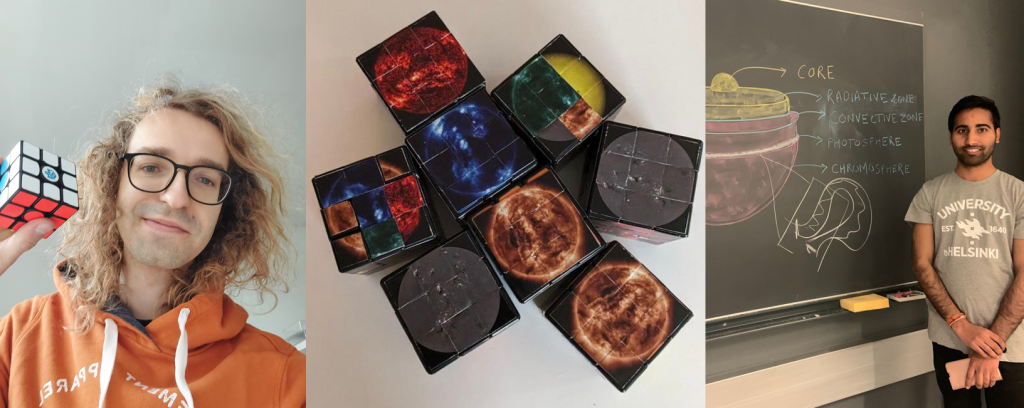
In short, the Sun is a big ball of ionized gas called plasma and the plasma at different temperatures radiates light at different wavelengths. With the filters focused on certain wavelengths, one can take images of the Sun that reveal regions, processes and structures at different temperatures. The colors on the images featured on our cubes are not real but selected by the scientists to represent each filter. This is because their wavelengths are in the ultraviolet range, beyond our eyes to see.
Here is an example: The image of the blue Sun is taken at the filter with the wavelength centered at 33.5 nanometers. Such light is emitted by iron atoms in a very hot plasma in the outermost atmospheric layers of the Sun at a temperature of 2.5 million degrees! In those extreme conditions iron atoms have lost 15 of their electrons. Bright areas are active regions where the magnetic field is strong and complex. They are the places where solar eruptions form.
Materials
Leaflet with detailed instructions on how to solve the Rubik’s Cube and how to interpret the images on each side of the cube (written by Andreas Wagner and Eleanna Asvestari): Download
Kahoot questions both in English and in Finnish: Download
Educational coloring page: Download
Academy of Athens & University of Ioannina
In the historic Averof Building in the heart of Athens, Greece, amid the vibrant atmosphere of European Researchers’ Night, the spotlight illuminated the dynamic Ms. Shifana Koya, a SWATNet PhD student affiliated with the Academy of Athens, the University of Ioannina in Greece, and UMCS in Poland. Ms. Shifana Koya took attendees on an electrifying solar and space weather expedition with her captivating poster presentation entitled “Space Weather and its Effects on Earth.” Her infectious enthusiasm truly set her apart; she didn’t just present, she engaged! She brought science to life for everyone fortunate enough to cross her path, making complex concepts accessible and exciting. And that’s not all! Ms Koya didn’t miss the chance to popularise the groundbreaking SWATNet project, ensuring that attendees left with a newfound appreciation for the research happening right before their eyes. The night in Athens undoubtedly left a lasting impression, likely inspiring students and children to dream of becoming future researchers.
See the poster she presented here
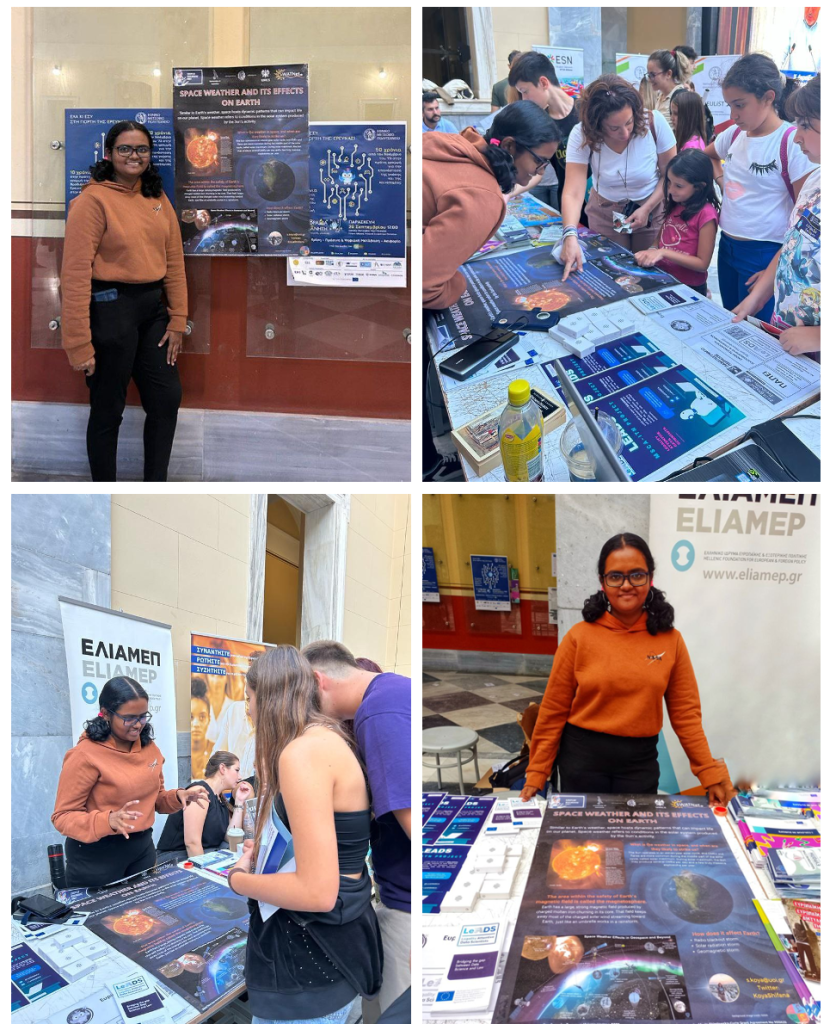
University of Coimbra and Instituto de Astrofísica e Ciências do Espaço
The night took place in downtown Coimbra. The SWATNet team participated in an activity in collaboration with the students of a high school in Coimbra. The week before the researchers’ evening, the students received training on the sun and solar activity and how it manifests itself. The practical activity involved the students counting the sunspots, projecting them on a graph, and then developing the action for the European Researchers’ Night. These students made posters and flyers explaining the activity. Thus, during the European Researchers’ Night, the students introduced solar activity and its impacts on economic and societal activity. They invited the people to count sunspots in an image acquired by the spectroheliograph of Coimbra and compare it with the projected data. At the same time, a film about the sun and solar activity was shown on a laptop in collaboration with Present Technologies. As you can see from the photos, there was a lot of adhesion.
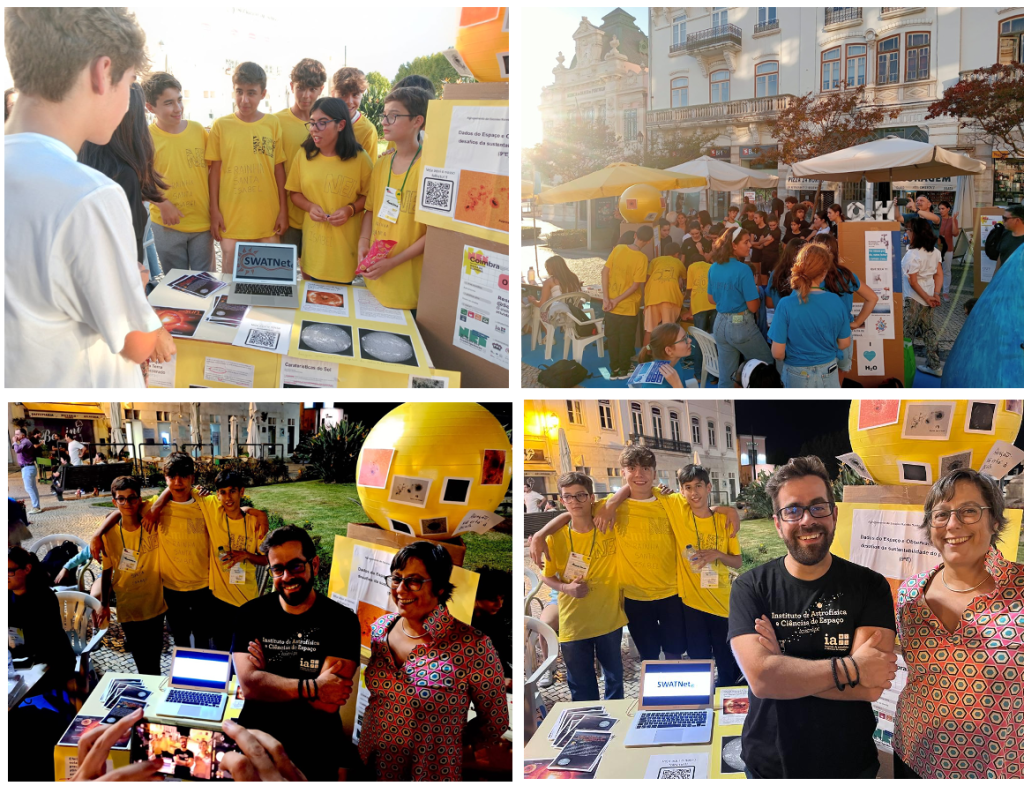
Hungarian Solar Physics Foundation / Eötvös Loránd University
During the European Researchers’ Night, the Hungarian Solar Physics Foundation was actively involved in activities. Dr Belucz Bernadett delivered two lectures at Almássy Castle in Gyula, Hungary. The first, titled “Terraforming Mars,” discussed humanity’s long-standing fascination with Mars, touching upon historical observations, the quest for extraterrestrial life, and contemporary Mars research, which is paving the way for a potential manned mission in the coming decades. The subsequent lecture, “Life in the Solar System outside the Earth,” explored the potential for life beyond our planet within the Solar System, pondering the capacity of other celestial bodies to sustain life and speculating about possible forms of extraterrestrial existence.

In an engaging further outreach activity in Hungary, Dr Balázs Asztalos and Szabolcs Soós took the initiative to bring the wonders of the Sun closer to the public. At Eötvös Loránd University in Budapest, they set up an H-alpha telescope to provide viewers with a unique and detailed glimpse of the Sun.
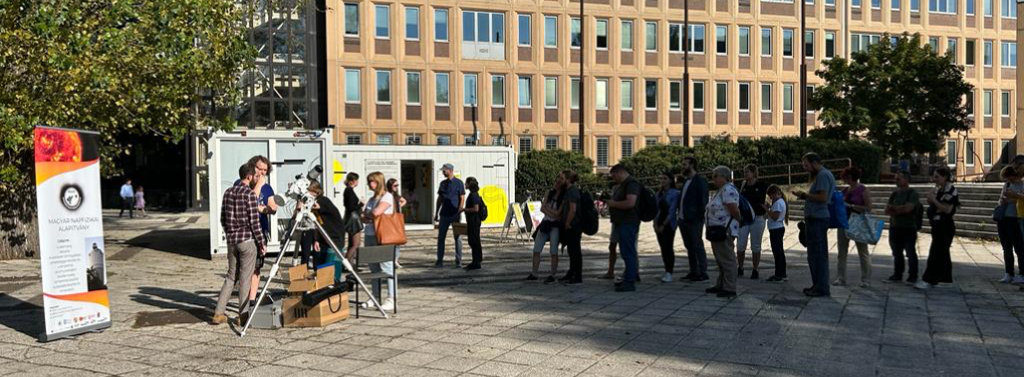
At both venues, the events experienced impressive participations. The number of attendees was significant, indicating a strong interest from the community in Space Weather, Solar Physics, and Astronomy in general. Moreover, the feedback received was overwhelmingly positive.
For more info, see on the lectures here
On the telescope demonstrations in the Hungarian TV News.
